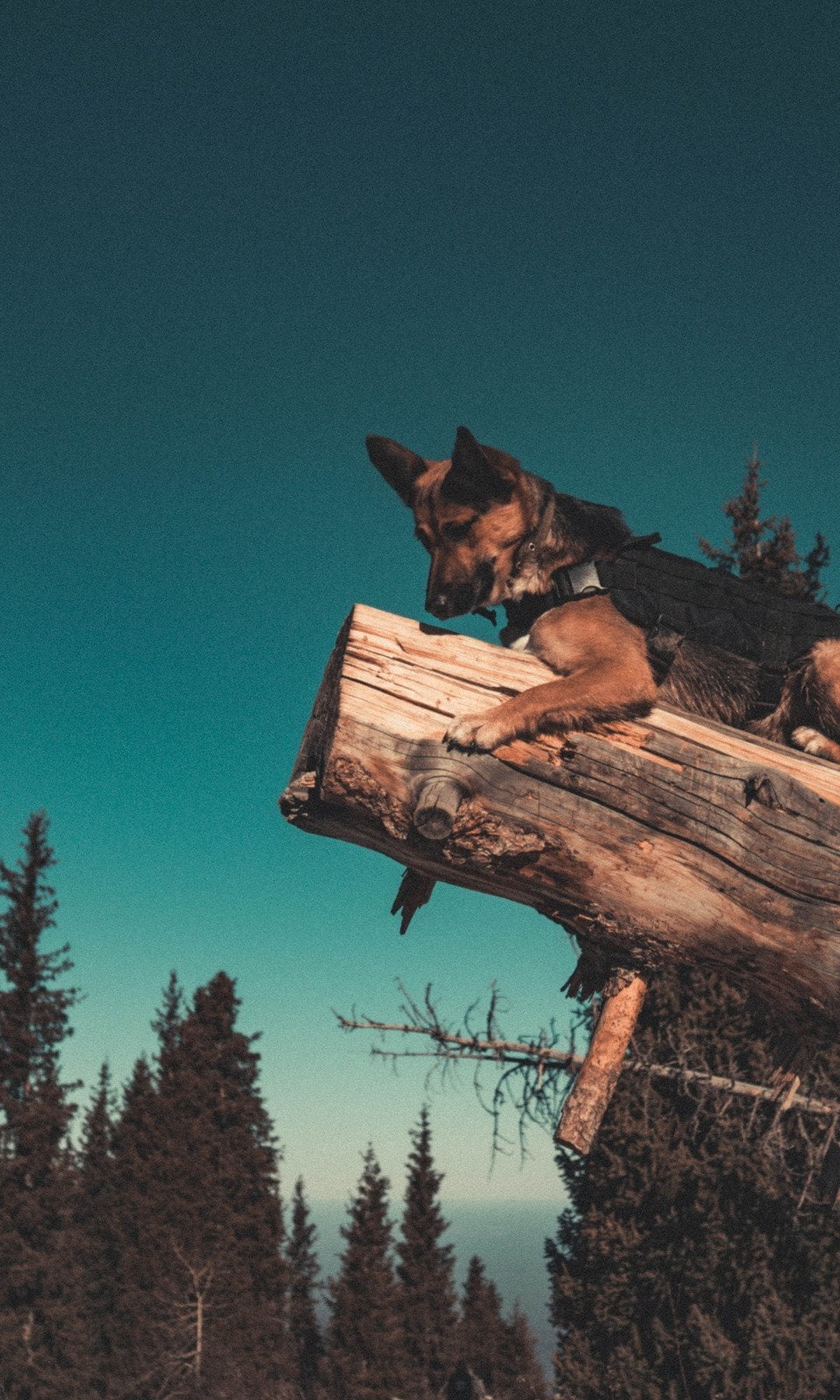Are you wondering how to train a dog to fetch step by step? Teaching your pup this fun and practical skill can bring numerous benefits to both you and your furry companion.
Not only does fetch provide physical exercise for your dog, but it also offers mental stimulation and helps strengthen the bond between you and your pet. In this article, we will guide you through the process of training your dog to fetch, from understanding the basics to overcoming challenges and taking the training to the next level.
Before diving into the step-by-step process of teaching your dog to fetch, it’s important to understand the fundamentals of the activity. This includes choosing the right equipment, such as toys or balls that are suitable for your dog’s size and breed, as well as selecting an appropriate playing environment that is safe and conducive for training.
By building a strong foundation in teaching your dog how to hold and release objects, you can set the stage for successful fetch training.
In addition to learning specific methods for teaching your dog to fetch, it’s crucial to keep the training process enjoyable and rewarding for your pet. Incorporating positive reinforcement and play into the training sessions can help keep your dog engaged and motivated. Furthermore, we will address common challenges that may arise during fetch training and provide tips for troubleshooting these issues, ensuring a smooth learning process for both you and your canine companion.
Understanding the Basics
When it comes to teaching your dog to fetch, having the right equipment and playing environment is essential for success. Here’s a closer look at what you need to know to get started.
Choosing the Right Equipment
To begin training your dog to fetch, you’ll need a few basic supplies. A durable, safe toy that is easy for your dog to grasp in its mouth is key. Tennis balls, frisbees, or other fetch toys are all great options. Make sure the toy is appropriate for your dog’s size and breed to avoid any potential choking hazards.
Selecting the Ideal Playing Environment
The playing environment can greatly impact your dog’s ability to focus and learn how to fetch. Initially, choose a quiet, enclosed area with limited distractions. An open field or backyard can work well for outdoor training sessions. Indoors, a spacious room with minimal obstacles will suffice. It’s important that the environment is safe for your dog and allows for plenty of space to move around without obstruction.
Introducing Your Dog to the Environment and Equipment
Allow your dog to become familiar with the chosen playing environment and equipment before starting formal fetch training. Encourage exploration and play with the toy in order to build positive associations with both the environment and the object. This step will help set the stage for successful fetch training.
Ensuring that you have chosen suitable equipment and an appropriate playing environment sets the foundation for effective fetch training. By providing a positive introduction to these elements, you can set your dog up for success as they progress through their fetch training journey.
Building a Strong Foundation
When it comes to teaching a dog to fetch, one of the most important elements is building a strong foundation. This means ensuring that your furry friend not only knows how to grab an object, but also understands the concept of holding and releasing it on command. Here are some essential steps for teaching your dog to hold and release objects.
Choosing the Right Object
Before you begin training, it’s important to choose the right object for your dog to hold. This should be something that is easy for them to grasp with their mouth, such as a soft toy or a small ball. It’s also crucial to select an item that your dog enjoys playing with and is not harmful in any way.
Teaching the “Hold” Command
The first step in teaching your dog to hold an object is by using the “hold” command. Start by presenting the chosen object to your dog and encouraging them to take it into their mouth. Once they have grasped it, say “hold” in a clear and firm voice. Repeat this process several times, rewarding your dog with treats each time they successfully hold onto the object upon hearing the command.
Teaching the “Release” Command
After your dog has mastered holding onto an object, it’s time to teach them the “release” command. Start by gently tugging on the object while saying “release.” When your dog lets go of the item, praise them and offer a treat as a reward. Repeat this process until your dog consistently responds to the “release” command.
By following these steps for building a strong foundation in hold and release training, you can set your dog up for success in learning how to fetch. With patience, consistency, and positive reinforcement, you will be well on your way towards having a fetching pro as part of your furry family.
Step by Step Training
Teaching your dog to fetch can be a fun and rewarding experience for both you and your furry friend. The first step in this training process is to ensure that your dog has mastered basic commands such as “sit,” “stay,” and “drop it.” Once these foundational skills are in place, you can begin the fetch training process. One of the most effective ways of teaching your dog to fetch step by step is by using positive reinforcement techniques.
Start by selecting a toy or object that your dog is already familiar with, such as a tennis ball or a favorite plush toy. Begin by encouraging your dog to pick up the object using a command such as “fetch” or “get it.” When your dog picks up the object, be sure to give plenty of praise and perhaps a treat as a reward. Repeat this process several times until your dog consistently picks up the object when prompted.
Once your dog has mastered picking up the object, move on to teaching them to bring it back to you. You can use another command such as “bring it” or “drop it” while gently guiding your dog back towards you with the object in their mouth. Again, be sure to reward and praise your pooch when they successfully return the item. With patience, consistency, and plenty of positive reinforcement, you’ll soon have a furry fetch expert on your hands.
| Teaching Method | Description |
|---|---|
| Positive Reinforcement | This method involves using rewards such as treats or praise to encourage desired behavior in dogs. |
| Consistency | Dogs learn best through repetition and consistent training methods. |
| Gentle Guidance | Using gentle guidance and encouragement helps build trust between you and your pet during fetch training. |
Keeping It Fun
When it comes to training your dog to fetch, it’s essential to keep the process fun and engaging for both you and your furry friend. Incorporating positive reinforcement and play into the training can make a significant difference in how quickly your dog learns and retains the fetch command. Here are some tips on how to keep the training sessions enjoyable for your dog:
- Use treats: Positive reinforcement through treats is a powerful tool when teaching your dog to fetch. Whenever your dog successfully retrieves an object, reward them with a treat. This will reinforce the behavior and encourage them to continue fetching.
- Playtime: Make fetch training a part of your regular play sessions with your dog. By incorporating the fetch command into playtime, you can create a positive association with the activity, making it more enjoyable for your dog.
In addition to positive reinforcement, it’s important to address any challenges that may arise during the fetch training process. Some dogs may initially struggle with understanding the concept of fetching or may lose interest quickly. In these situations, it’s crucial not to get frustrated but instead to find creative ways to keep the training fun and exciting for your dog.
One way to overcome challenges is by introducing variety into the fetch training sessions. Switch up the toys or objects you use for fetching or change the environment where you play with your dog. Adding variety can help keep your dog engaged and prevent boredom from setting in during training sessions.
By incorporating positive reinforcement, play, and variety into the fetch training process, you can make learning how to fetch an enjoyable experience for both you and your furry companion. With patience and consistency, you’ll be able to teach your dog this fun and useful skill in no time.
Overcoming Challenges
When training your dog to fetch, you may encounter some common challenges and issues that can hinder the process. It’s important to address these difficulties in order to ensure a successful training experience for both you and your furry friend. Here are some common issues and troubleshooting tips for training your dog to fetch:
1. Lack of Interest: Some dogs may show little to no interest in fetching, which can be frustrating for owners. To address this issue, try using a variety of fetch toys such as balls, frisbees, or plush toys to pique your dog’s interest. Additionally, incorporating treats and praise can help motivate your dog to engage in the fetching activity.
2. Difficulty Letting Go: Teaching your dog to release the fetched object can be challenging for some dogs. To overcome this issue, start by teaching the “drop it” command using positive reinforcement techniques. Gradually incorporate the command into the fetch training process, rewarding your dog every time they successfully release the object.
3. Distractions and Lack of Focus: Dogs can easily get distracted during fetch training, especially in outdoor environments with other animals or stimuli. To address this issue, start training in a quiet and enclosed space before gradually introducing more distractions. Use high-value treats and plenty of verbal praise to keep your dog focused on the task at hand.
By addressing these common challenges and implementing troubleshooting tips, you can ensure a successful fetch training experience for you and your dog.
Taking It to the Next Level
Now that your dog has mastered the basics of fetching, it’s time to take their skills to the next level. Advanced fetch training techniques can help to make the game even more exciting and engaging for both you and your furry friend. Whether you want to enhance their speed, distance, or focus, there are several methods you can use to elevate your dog’s fetching abilities.
One way to advance your dog’s fetch training is by incorporating obstacle courses into the game. Creating a course with hurdles, tunnels, and other obstacles can challenge your dog both mentally and physically. This not only adds an extra layer of fun to the game but also helps to improve their coordination and agility. You can start with simple obstacles and gradually increase the difficulty as your dog becomes more proficient.
Another advanced technique is teaching your dog to differentiate between different types of objects when fetching. By using toys of varying shapes, sizes, and textures, you can train your dog to recognize specific items and retrieve them on command. This advanced level of fetch training not only stimulates their cognitive abilities but also adds a new dimension of excitement to the game.
In addition, incorporating scent work into fetch training can provide an added challenge for your dog. By hiding scented objects or treats in the playing area, you can encourage your dog to use their sense of smell to locate and retrieve the items.
This not only enhances their tracking skills but also makes the game more stimulating and rewarding for them. These advanced fetch training techniques are great ways to keep your dog engaged and enthusiastic about playing fetch while continuing to strengthen the bond between you both.
Helpful Tools and Resources
In conclusion, training a dog to fetch can be a fun and rewarding experience for both you and your furry companion. By following the step by step methods outlined in this article, you can build a strong foundation and overcome common challenges to teach your dog this enjoyable skill.
One vital aspect of successful dog fetch training is utilizing the right tools and resources. There are many recommended toys, books, and videos available that can provide further guidance on how to train a dog to fetch step by step. Whether it’s choosing the best fetch toy for your dog or finding instructional videos for advanced techniques, these resources can be incredibly helpful in enhancing your training process.
It’s important to remember that patience, consistency, and positive reinforcement are key elements in teaching your dog to fetch. With the proper equipment, a solid understanding of the basics, and access to useful resources, you can embark on an exciting journey of bonding with your canine companion through the joy of playing fetch. So get ready to enjoy quality time with your pet while watching them master the art of fetching.

Welcome to the blog! I am a professional dog trainer and have been working with dogs for many years. In this blog, I will be discussing various topics related to dog training, including tips, tricks, and advice. I hope you find this information helpful and informative. Thanks for reading!





